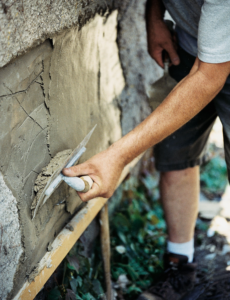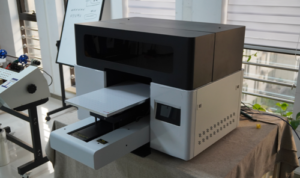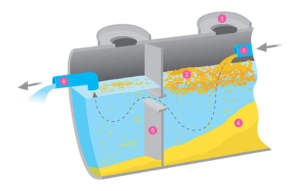Construction is any activity that involves building something. This includes new homes, office buildings, and even bridges!
The construction industry is valuable for society. It creates jobs and pays fairly high wages. It also makes housing more affordable and helps families stay together. It also helps improve public safety through building structures that can withstand natural disasters like floods or earthquakes. Contact Pacgen Construction now!

When it comes to construction, planning ahead is one of the most important things you can do. In fact, it’s the key to getting the job done on time and within budget. Without a good plan, it’s easy to fall behind schedule and overspend. This is especially true in large construction projects, where every team member must work together to meet the goals set by the client.
Effective project planning involves creating a timeline for the entire project, including the development, construction, and inspection phases. It also includes defining project scope, assessing available resources and equipment, and setting clear objectives and responsibilities for all stakeholders. In addition, effective project planning involves developing strategies for risk mitigation. It is also necessary to determine how a new project will impact existing workloads and company policies.
The first step in effective project planning is strategic planning, which focuses on high-level selection of objectives and the overall schedule. It is followed by the operational planning phase, which creates a detailed project execution plan that falls within the guidelines laid out in the strategic plan. Finally, the monitoring phase is carried out at the same time as the implementation of the project plan. This entails monitoring progress and performance on site and identifying and resolving any roadblocks that may arise.
In addition to ensuring that the project is completed by the deadline specified in the contract, an effective project schedule will help to control costs and maintain quality standards. It will also allow the project team to purchase materials and supplies more efficiently, track worker attendance and ensure that safety protocols are adhered to, and reduce rework due to unplanned delays.
Another benefit of planning ahead is the ability to better estimate costs and predict a project’s profitability. This is important when determining whether or not a project is worth taking on, as well as when making future expansion decisions. An effective construction schedule will also make it easier to secure financing and loans for additional projects, as banks will be able to see the projected timelines of the project and how they align with their lending criteria.
Prioritize Safety and Quality
Construction projects are inherently dangerous, but maintaining a high level of safety and quality can significantly reduce the risks. The first step in maintaining this standard involves training workers to understand and follow safety protocols and procedures. It is also important to incorporate safety into the design and planning process. For example, ensuring that there are clear boundaries between traffic areas and construction zones can significantly lower the likelihood of accidents. Lastly, regular inspections and audits are essential to ensure that the project is on track and that potential risks are quickly identified and addressed.
Construction accidents are typically caused by a number of factors, including falls, machinery failure, and exposure to harmful materials. The most significant factor in reducing these incidents is stringent safety protocols, which should be strictly adhered to by all workers. This includes requiring workers to wear personal protective equipment, adhering to established safety regulations, and regularly inspecting the site for hazards. In addition to these steps, it is also important to implement training programs that help workers identify and mitigate hazards. This can include providing workers with detailed training on specific equipment, such as power tools, and fostering a culture of open communication between all team members regarding any concerns they may have.
Prioritizing safety and quality also sends a strong message to employees that their well-being is of the utmost importance, which can help to build a strong culture of responsibility and accountability on the job. This can also improve morale and attract and retain high-caliber laborers.
A digitised Quality, Health, Safety and Environment (QHSE) management system can significantly improve the quality of your work in construction. The right software can allow you to perform inspections more efficiently, create a complete audit trail, standardise forms and reporting, and more.
While it is impossible to prevent all mistakes and unsafe working conditions on construction sites, a thorough incident analysis can help to identify the root causes of these issues and prevent them from occurring again in the future. This can be achieved by implementing a centralized platform for documenting issues, providing timely feedback to all team members, and fostering an overall culture of safety in construction.
Manage the Timeline and Budget Carefully
When it comes to construction, it’s important to manage the timeline and budget carefully. There are many moving parts and stakeholders involved, so it’s crucial to communicate often, keep everyone updated, and address any issues promptly. This will help ensure that the project stays on track and avoids any unforeseen delays or costs.
Before actual construction can begin, it’s a good idea to meet with all the key stakeholders and review the plan in detail to make sure that everyone understands what’s expected. This will also give you the opportunity to address any concerns or questions before they become a problem. Additionally, it’s a good idea to conduct a feasibility study to determine whether or not the proposed project is feasible. This will provide you with a detailed assessment of the technicality, economics, and finances of the project, which can help you decide whether or not to move forward with it.
Once the plan is in place, it’s time to begin construction. However, before the work can start, it’s important to prepare a budget and estimate the cost of materials and labor. This can be done by performing a material takeoff and bill of quantities, which will identify the itemized construction materials required for each task and provide an estimated cost based on current market rates and availability. It’s also a good idea to include a contingency budget to account for unexpected expenses.
After preparing a budget, it’s important to monitor financial performance throughout the project to make sure that the actual expenses are within the estimated amounts. This will allow you to quickly identify any potential problems and take corrective measures to prevent overspending.
It’s also essential to maintain open lines of communication with the contractor and team members throughout the project. This will help to ensure that all parties are working together effectively and that any issues are resolved promptly. Keeping accurate records is another vital step, as this will help to reduce any risk of costly errors or miscommunications. To help with this, it’s a good idea to use an all-in-one software solution such as TeamBoard ProScheduler, which can be used to create an effective construction project timeline and schedule.
Hire the Right Contractors and Team Members
Hiring the right team members can be one of the most important things you do for your construction business. A well-thought-out recruitment process is necessary to ensure that you get the most out of your employees and that you have a solid team working together towards a common goal.
To find the right talent, you must first define your ideal candidate and what they are looking for in a job. You can do this by writing a job description that includes the exact hard and soft skills that are required for the position. You should also include any certifications, licenses, or education qualifications that are necessary to work on the job site.
Then, you can start recruiting. This may involve reaching out to your current employees, trade professionals, and collaborators to ask for referrals. These can be among the best sources for finding top talent, as they already know the applicant and can vouch for their reliability and skills. Plus, referred candidates often integrate more smoothly into existing teams and are more likely to stay with the company for longer periods of time.
While interviewing potential contractors, ask them about their experience with projects similar to yours. Also, ask about their quality control processes to ensure that their work meets your expectations and industry standards. Also, be sure to discuss any payment terms before starting the project, to avoid financial misunderstandings down the line.
Another thing to look for is a contractor that offers a warranty on their work. This is a sign of their confidence in their workmanship and provides you with peace of mind that any problems that arise can be addressed at no additional cost.
Finally, a good contractor will handle any required permits for the project. This can save you a lot of hassle and stress as well as help to speed up the project timeline.
While it can be tempting to cut corners when it comes to hiring, doing so could have significant consequences down the line. A reliable contractor will put the time and effort into vetting candidates and ensuring that they are qualified for the role. This will result in a better overall construction project and a happier, more productive team.








